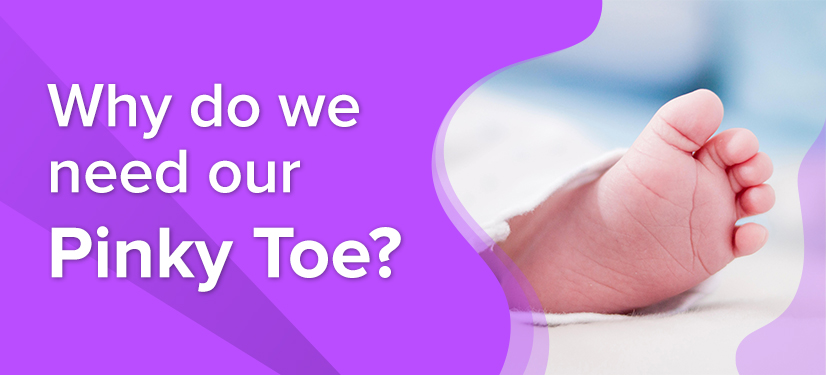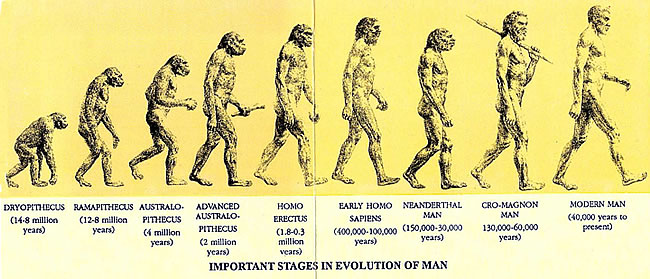
It’s summer, it’s hot and you are wearing an open-toed sandal. You are casually walking around in your house when suddenly,

You didn’t notice the edge of the table corner and your poor little pinky toe went crashing into it.
Ouch! You scream your lungs out in pain. Your tiny toe being on the edge of your feet faces a death threat almost all the time. Every time it gets poked, it reminds you that even the tiniest can be the mightiest!
Ever wondered why the fifth toe gets hurt often and not the big toe or the other three ones? Why do we have pinky toes when they seemingly serve no real functions apart from being cute? How do some animals survive without them?
You will get answers to all these questions and more here.
You will be surprised to know that our fifth toe, also known as ‘little toe’, ‘small toe’, ‘pinky toe’ or ‘baby toe’, has a lot more important roles to play in our everyday life than we could imagine. It is, in fact, a proud member of a complex system within the foot. Its primary duties involve – helping us walk without tripping down, running without losing our balance, and swimming well with our feet (and hands!). But did you know that a million years ago, the little toe was way bigger than what it is now?

In our previous post on How humans have evolved over the centuries, we discussed the various forefathers of homo sapiens. They made great use of their hands and feet to claw, climb trees, jump around and grab food. Over the centuries, they evolved to homo sapiens and adjusted to their surroundings. They gradually started walking on just two feet instead of both feet and hands. Consequently, the toes embryologically evolved for that particular reason, thus making the purpose of the fifth toe less significant compared to the other four.

The modern human foot consists of 26 bones, 30 joints, and more than 100 muscles, tendons, and ligaments. All these parts work together to provide support, balance, and help to move from one place to another. If a small part goes missing or even the tiniest bone gets fractured, it can cause unstable movements.
Of course! We can learn to live without our little toe but it is easier to have one, since it helps us keep our balance while walking, running and jumping. Wondering how? Let’s learn how our feet help us to walk.
We owe our walking balance to the 26 bones that make up the hindfoot, mid-foot, and forefoot. The forefoot contains the five toes. The big toe, also known as the thumb toe or the hallux contains two major bones and the rest have three little bones. These five toes connect to the mid-foot by five long bones called metatarsals. The hindfoot connects to the mid-foot by cuneiform and cuboid bones, which are connected to the ankle bone, called the talus.
Humans walk in a tripod fashion, where the big toe knuckle, the little toe knuckle, and the heel, have a tripod walking ability.
When we are standing or walking, our heel supports most of our body weight, with the big toe and little toe stabilising the forefoot. As we take a step, the foot rolls from lateral to medial in normal foot biomechanics. This motion helps us ‘push off’ to the next step.

The outside of the back of the heel is the first point of contact. At this point, the heel would be turned to face slightly inwards towards the other leg. As the foot hits the ground and lowers, the heel will roll down due to motion at the joint below the ankle.
Charles Darwin, in his book The Descent of Man, pointed out roughly a dozen body parts that he gladly described as “useless, or nearly useless.” Current studies state that our pinky toe might join that list soon.
According to Natural History, the primitive primates used to walk and balance more on the midline of their feet. But in the course of evolution, the balancing points have gradually shifted toward the side of the big toe. As a result, the size of the big toes has grown to the largest of all the toes, with a progressive decrease in size and function as one moves to the little toe. This means that humans once used to rely on their pinky toes for balance, but now they do not rely on them as much, and if this trend keeps up, they will no longer need their pinky toes. But since nature is slow and so is the evolution of human beings, it might take another million years for the pinky toe to be on its way out!
Can you name any other human body parts that have less function and might not be there in the future? Tell us your reasons in the comments below.
Books are Tanaya Goswami’s first love and cheesecakes come a close second. Talking about movies, music, calligraphy, politics, and Elon Musk will get you listed under the friends’ section of her diary. Ever since moving on from her job as an English lecturer, she spends her time at BYJU’S crafting stories filled with emotion and sprinkled with sarcasm. Outside of work, she’s either learning something new (French, most recently!) or is curled up with a book and a cup of coffee. She firmly believes that discovering what you don’t know is the key to knowledge and is constantly working towards improving herself. Drop in a line at storyweavers@byjus.com if you liked her stories, have something nice to say, or if you have compelling ideas to share!
Comments
Debasreeta Deb
May 10, 2021
Thank u so much @team byjus … For such an information….. I loved it
… I didn’t knew that before …. And a special thanks to @Tanaya Goswami mam for sharing this knowledge…..
Sunandana Kar
March 21, 2021
Woww!!
I did not knew that before!
Thank you Byju’s ??
Rishav Gupta
March 20, 2021
Thank you BYJU’S (Tanaya miss) for sharing this.
yeah there are many human body parts that can be extinct in the future like:
i) Hair v) Fused tail
ii) Appendix vi) The third eyelid (nictitating membrane of the eye)
iii) The ring finger and pinky finger vii) +100, etc.
iv) pinnae of ears